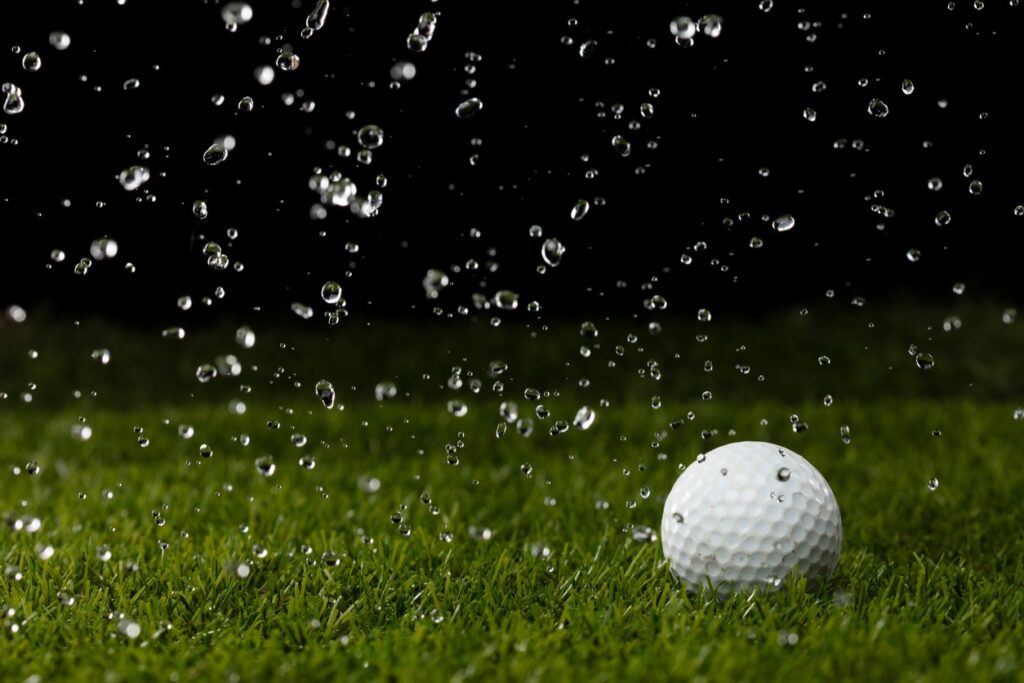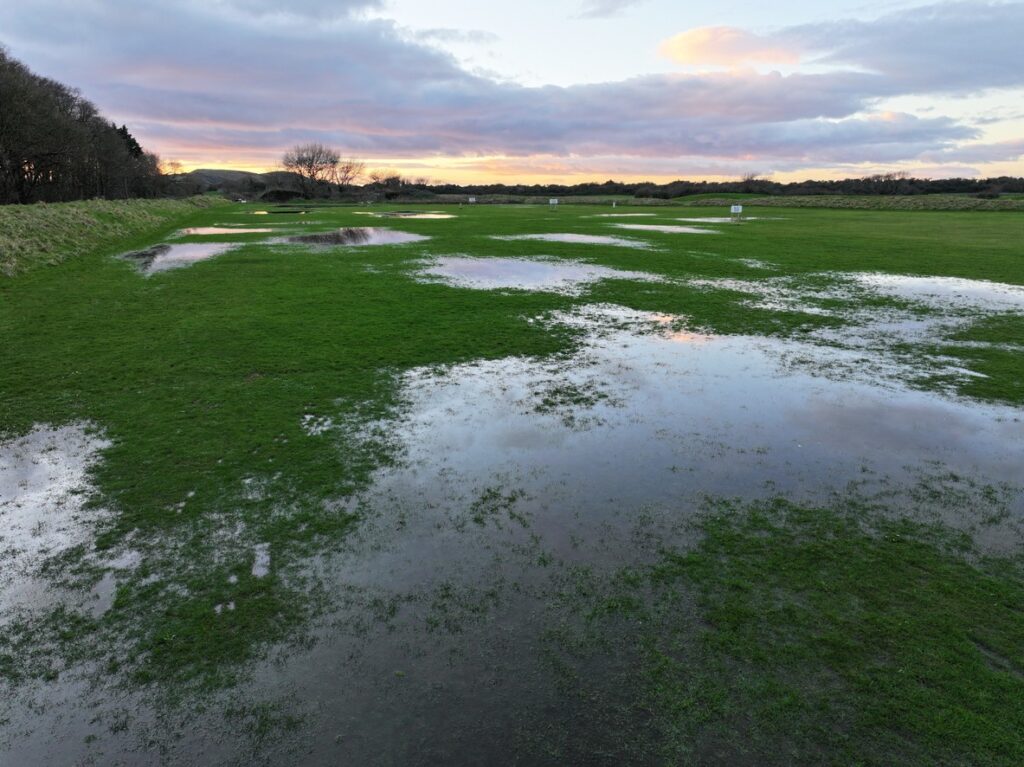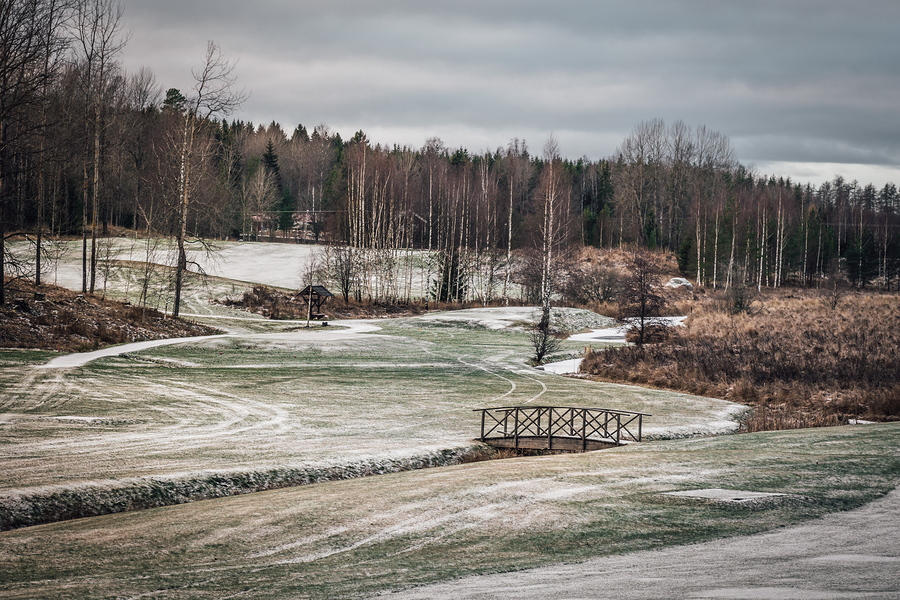Golf is a sport for all seasons, but winter often tests the mettle of even the most dedicated players. The rain-soaked fairways, squishy greens and persistent drizzle bring unique challenges that demand both skill and strategy. Playing in rainy conditions can be frustrating, but it’s also an opportunity to refine your game and enjoy the course from a different perspective. This guide will help you embrace the soggy challenges of winter golf and play confidently in less-than-ideal conditions.
Understanding the Challenges of Winter Golf

Muddy Fairways
Muddy fairways can transform the way you approach your shots. Wet ground often leads to poor ball lies, where mud clings to your ball or your club. This can drastically reduce control, leading to unpredictable ball flight and shorter distances. Additionally, wet turf can hinder your swing, making it harder to achieve clean contact. For instance, if your ball plugs into the ground, you may struggle to generate enough lift to get it airborne. Understanding these challenges allows you to make smarter choices about your stance, swing and shot selection.
Waterlogged Greens
Greens are the heart of the golf course, but when they’re waterlogged, their dynamic changes entirely. Water slows down ball roll, so a putt that would normally travel far may barely make it halfway. Puddles or wet patches can also alter the ball’s path, requiring greater precision in reading the green. Furthermore, heavy rainfall can lead to temporary water accumulation, causing delays or forcing you to take relief. Learning to adapt to slower greens and water conditions is essential for maintaining your score.
Soggy Roughs and Bunkers
The rough becomes even trickier in wet weather. Waterlogged grass grabs your club, reducing your ability to create spin or lift. This often leads to erratic ball flight and loss of accuracy. Bunkers pose their own set of problems; instead of light, fluffy sand, you’ll encounter compacted or wet sand that requires a completely different approach. Without proper technique, escaping a bunker in wet conditions can add unnecessary strokes to your score.
Chilly, Damp Weather
Beyond the course, winter weather takes a toll on you as a player. Cold air reduces ball distance and makes grips slippery, impacting your confidence in every shot. Meanwhile, your muscles may feel stiff, increasing the risk of injury or poor performance. Preparing your body with dynamic warm-ups and staying mentally focused are just as important as preparing your equipment.
Essential Gear for Winter Golf

Weatherproof Clothing
Dressing for winter golf starts with layering. A thermal base layer traps body heat, keeping you warm, while a moisture-wicking mid-layer prevents sweat from making you cold. An outer waterproof jacket and rain pants should be breathable, offering protection from rain without restricting your swing. Specialized rain gloves provide both warmth and grip, ensuring that your hands remain steady even in wet conditions.
Waterproof Shoes and Socks
A good pair of waterproof golf shoes is non-negotiable for winter golf. They provide the traction needed to maintain stability on slippery fairways and greens. Look for shoes with advanced tread designs and cleats for better grip. Complement them with moisture-wicking or thermal socks that keep your feet dry and comfortable throughout the round.
Umbrella and Towel
A sturdy golf umbrella is invaluable when sudden showers hit the course. Choose an umbrella that’s large enough to cover both you and your bag. A dry towel is equally essential—keep it handy to dry your golf clubs, grips, hands and wet ball. Attach it securely to your golf bag for easy access, even when moving between shots.
Winter Golf Balls
Standard golf balls can lose performance in cold weather conditions due to decreased compression. Switching to low-compression golf balls designed for winter conditions helps maintain distance and control. These balls are engineered to perform in colder temperatures, ensuring that your game doesn’t suffer because of the elements.
Adjusting Your Play for Wet Conditions

Modify Your Stance and Swing
In wet conditions, a stable stance is critical. Widen your feet slightly to improve balance and dig your spikes into the ground for added traction. Reduce your golf swing speed to maintain better control and ensure solid contact. A slower, more deliberate swing minimizes the risk of slipping or mishitting the ball.
Choose Clubs Wisely
Club selection becomes more strategic in wet weather. For instance, lofted clubs like wedges and hybrids help lift the ball out of wet lies, avoiding the drag of muddy turf. When hitting from the fairway, consider using fairway woods or hybrids instead of long irons, as they provide better results in soft conditions. Adapting your club choices can mean the difference between a great shot and a wasted one.
Play for Less Roll
Wet fairways and greens drastically reduce ball roll, requiring you to focus more on carry distance. Plan your shots to land closer to the target rather than relying on the ball to roll. Adjusting your yardages and playing to the course conditions helps you avoid frustration and maintain consistency.
Avoid Divots
Divots become more problematic in muddy conditions, as they can trap your ball and lead to lost strokes. To prevent large divots, use a shallower angle of attack. Sweep the ball off the turf rather than digging into it, allowing for cleaner contact and better results.
Mastering the Greens

Read the Greens Differently
Wet greens can be deceiving, as water alters how the ball moves across the surface. Take extra time to read the green, focusing on the texture and sheen to identify wet patches. Pay attention to subtle slopes, as the ball may not break as much as you expect in slower conditions.
Focus on Speed Control
Speed control becomes the most important aspect of putting on wet greens. A putt struck too softly may stop well short, while an overly aggressive putt can skid past the hole. Practice lag putting to fine-tune your feel for distance and ensure you leave yourself manageable second putts.
Clear Standing Water
If standing water obstructs your line, the rules of golf allow for relief. Learn how to correctly identify and handle temporary water to maintain fair play. Using your knowledge of the rules can save you strokes and keep your round moving smoothly.
Overcoming Rough and Bunker Challenges

Tackling Wet Rough
Wet rough grips your clubface, making it harder to generate spin and power. To counter this, use a club with more loft to help lift the ball out of the wet grass. Take a more vertical swing path to minimize contact with the wet ground and achieve cleaner ball striking.
Escaping Waterlogged Bunkers
Wet bunkers require a shift in technique. Instead of trying to splash the ball out with a sand wedge, use a pitching or gap wedge to pick the ball cleanly off the compacted surface. Open your stance slightly and focus on a controlled swing to avoid digging too deeply into the sand.
Winter Course Strategy

Play Conservatively
Aggressive play often backfires in wet conditions. Aim for the center of fairways and greens, avoiding risky shots that could land in hazards or muddy areas. A conservative approach keeps your scorecard intact and reduces frustration.
Watch for Hidden Hazards
Rain can obscure water hazards, soft spots, or other course features. Stay alert and assess each shot carefully, using rangefinders or GPS devices to guide your decisions. Awareness of the wet course conditions can prevent costly mistakes.
Tee It Forward
If wet conditions are significantly reducing your distance, consider playing from forward tees. This adjustment shortens the course, making it more enjoyable and less physically demanding.
Mental Preparation for Winter Golf
Stay Positive
A positive attitude is your greatest ally in challenging conditions. Instead of focusing on the inconveniences, view each shot as an opportunity to improve your adaptability and skill. Enjoy the unique aspects of winter golf, such as quieter courses and peaceful scenery.
Manage Expectations
Understand that your performance may not match your best rounds in ideal weather. Set realistic goals and celebrate small wins, such as a well-struck drive or a successful up-and-down. Lowering your expectations helps you stay relaxed and focused.
Enjoy the Scenery
Wet winter golf often reveals the course’s natural beauty in new ways, from frost-tipped grass to misty landscapes. Take time to appreciate the environment and savor the experience, even if your score isn’t perfect.
Post-Round Maintenance
Clean Your Gear
Mud and moisture can damage your clubs and bag if left unchecked. Wipe down your golf equipment thoroughly after each round and inspect it for signs of wear. Proper maintenance ensures your gear remains in top condition for future rounds.
Dry Out Your Shoes
Wet shoes can lose their shape and become uncomfortable. Use newspaper or a shoe dryer to absorb moisture and prevent odors. Taking care of your shoes extends their lifespan and ensures your comfort on the course.
Reflect and Adapt
Every round in wet conditions teaches you something new. Reflect on what worked and what didn’t, whether it’s a club choice, swing adjustment, or mental strategy. Use these lessons to improve your future performance and approach wet weather golf with confidence.
Playing golf in rainy weather and wet conditions demands preparation, adaptability, and a positive mindset. While soggy fairways, waterlogged greens and bad weather may seem like obstacles, they’re also opportunities to develop your skills and experience the game in a new way. By equipping yourself with the right gear, adjusting your strategy and embracing the unique challenges of wet weather golf, you can enjoy the sport year-round. So, don your waterproof gear, grab your umbrella and hit the course with confidence—rain or shine!
